Unleashing the Power of the Soul: Spirit and Spirituality through Toni Cade Bambara’s The Salt Eaters and John Bolling’s The Spirit of the Soul (Part I)
By Guest Contributor on November 22, 2014By Dr. Janice Liddell
Editors’ Note: We are pleased to publish part one of this two part previously unpublished essay, which was originally written in the early 2000s. We will publish part two of this two part essay tomorrow (Sunday, November 23, 2014).
There is an aspect of black spirit, of inherent black nature, that we have not addressed: the tension, the power that is still latent, still colonized, still frozen and untapped, in some 27 million people. We do not know how to unleash, we do not even know how to speak of it in a courageous manner yet.
—Toni Cade Bambara
Toni Cade Bambara stated the above words in an interview with Beverly Guy-Sheftall in 1979, a year before The Salt Eaters (S.E.) was published. In retrospect, we recognize that she must have been consumed by the very spirit about which she speaks. While the artistic outcome may not have been clear to the author at the time of the interview, forces were nevertheless in action that would guide her to complete the work that addresses that latent, untapped power of those 27 million people. We know she was writing the novel at the time of the interview, because she describes it:
As for the novel—it’s still a mystery to me. It started out with a simple story of a carnival society that decides to stage an old slave insurrection as their contribution to the pageant. It’s developed into—well, you can imagine. (244)
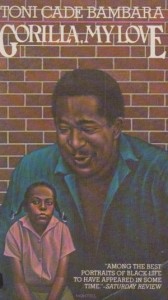 Actually, in 1979, no one could have imagined the textural (and textual) complexity of her inaugural novel. It is unlike anything she wrote before it or after. Most of her imaginative works, up to that point, had been essays and short fiction. Her fiction, while well-received by critics, scholars and students was never considered cutting edge. The stories in Gorilla, My Love—which she described as “on the block, in the neighborhood, back-glance(s)”—and those in The Sea Birds Are Still Alive—“both on-the-block, and larger-world-of-struggle”—are memorable and successful, because they articulate in a clear traditional linear structure, recognizable characters, relevant and important socio/political themes, and conventional language patterns. But S.E. is different; in fact, it is more than different. The complex non-linearity; panoramic range of themes and images; reclamation of ancient personae; introduction to radically new characters; a multiplicity of dimensions, including the social, economic, political, cultural and environmental are all seen through the prism of what psychiatrist John Bolling identifies as an
Actually, in 1979, no one could have imagined the textural (and textual) complexity of her inaugural novel. It is unlike anything she wrote before it or after. Most of her imaginative works, up to that point, had been essays and short fiction. Her fiction, while well-received by critics, scholars and students was never considered cutting edge. The stories in Gorilla, My Love—which she described as “on the block, in the neighborhood, back-glance(s)”—and those in The Sea Birds Are Still Alive—“both on-the-block, and larger-world-of-struggle”—are memorable and successful, because they articulate in a clear traditional linear structure, recognizable characters, relevant and important socio/political themes, and conventional language patterns. But S.E. is different; in fact, it is more than different. The complex non-linearity; panoramic range of themes and images; reclamation of ancient personae; introduction to radically new characters; a multiplicity of dimensions, including the social, economic, political, cultural and environmental are all seen through the prism of what psychiatrist John Bolling identifies as an 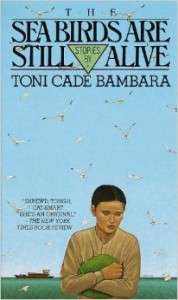 Africentric psycho-spiritual worldview.1 It is this worldview as articulated by Dr. Bolling in his groundbreaking work The Heart of Soul: An Africentric Approach to Psycho-Spiritual Wholeness: A Manual of the Rites of Passage to a Soul-Centered Worldview that is the critical paradigm for this examination of Toni Cade Bambara’s writing of S.E., as well as for the examination of the novel itself. Herein, it serves as a key by which to unlock a myriad of the novel’s complexities.
Africentric psycho-spiritual worldview.1 It is this worldview as articulated by Dr. Bolling in his groundbreaking work The Heart of Soul: An Africentric Approach to Psycho-Spiritual Wholeness: A Manual of the Rites of Passage to a Soul-Centered Worldview that is the critical paradigm for this examination of Toni Cade Bambara’s writing of S.E., as well as for the examination of the novel itself. Herein, it serves as a key by which to unlock a myriad of the novel’s complexities.
What Bambara wrote, we realize now, is nothing short of inspired genius.
Even though it is still considered by many to be inaccessible, at worst, and difficult, at best, S.E. has to be ranked among the premier African American works of the twentieth century. Gloria Hull describes it as:
a daringly brilliant work which accomplishes even better for the 1980s what Native Son did for the 1940s, Invisible Man for the 1950s or Song of Solomon for the 1970s; it fixes our present and challenges the way to the future. Reading it deeply should result in personal transformations; teaching it can be a political act. (213)
 S.E. was and remains a provocative work of mythic proportions. But even more importantly, both the novel and its process represent not just the embodiment of the power about which Bambara speaks, but, in both text and process, she signals the unleashing or this “colonized” power. During the same interview with Guy-Sheftall, Bambara describes how S.E. was not the work that she sat down to write, but rather it was the story that came. This is not unusual for writers; many are inspired onto paths very different from those they start and the completed work inevitably looks little like the one that “got them to the desk in the first place.” But for Bambara the process was even more telling. She reveals that:
S.E. was and remains a provocative work of mythic proportions. But even more importantly, both the novel and its process represent not just the embodiment of the power about which Bambara speaks, but, in both text and process, she signals the unleashing or this “colonized” power. During the same interview with Guy-Sheftall, Bambara describes how S.E. was not the work that she sat down to write, but rather it was the story that came. This is not unusual for writers; many are inspired onto paths very different from those they start and the completed work inevitably looks little like the one that “got them to the desk in the first place.” But for Bambara the process was even more telling. She reveals that:
[T]he writing of The Salt Eaters was bizarre…I began with such a simple story line—to investigate possible ways to bring our technicians of the sacred and our guerillas together. A Mardi Gras society elects to reenact an old slave insurrection in a town torn by wildcat strikes, social service, cutbacks, etc. All hell breaks loose. I’m sliding along the paper, writing about some old Willie Bobo on the box and, next thing I know, my characters are talking in tongues; the street signs are changing on me. The terrain shifts, and I’m in Brazil somewhere speaking Portuguese. I should mention that I’ve not been to Brazil yet, and I do not speak Portuguese. I didn’t panic. It was no news to me that stuff comes from out there somewhere. I dashed off about thirty pages of this stuff, then hit the library to check it out. I had to put the novel aside twice; but finally, one day I’m walking out in the woods…and I slump down next to my favorite tree and just said, Okay, I’m stepping aside, y’all. I’m getting out of the way. What is the story I’m supposed to be telling? Tell me.” Then I wrote The Salt Eaters. (32, italics mine)
From Bambara’s own statements regarding this process, it might well be considered that of a kind of Shamanic journey.By her own description, she, like a Shaman or Voudon priestess, entered another level of reality without physical movement to retrieve or receive the “messages.” Only after 1980—and the publication of S.E.—do we realize that she has encountered the initial stages of her own artistic and spiritual “unleashment” as she was almost guided to write S.E.
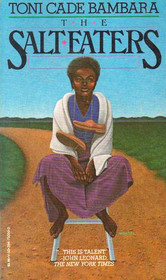 Dr. Bolling speaks not at all about Toni Cade Bambara (if, in fact, he’s even heard of her) nor does he make mention of what must surely be considered her magnum opus; nevertheless, he inadvertently embraces both the novelist and the novel in his understanding and articulation of what he calls “the heart of soul.” In his provocative treatise, he offers an epistemological paradigm by which to effectively unlock the symbolic meaning of the novel and to analyze the very power it unleashes. Dr. Bolling’s straightforward premise is that in order for a true “Call to Center” to occur, the spiritual-intuitive consciousness of the right brain must achieve re-integration and reestablish harmony and balance with the rational-logic scientific worldview (2). This integration must take place at both a personal and communal level. However, in order for peoples of African descent and people of other “soul centered” cultures (Asian, Indians, Aborigines, etc.) to achieve balance and wholeness at the levels of the personal and the community, they must recognize the existence and understand the nature of these two “planes of reality.” Then, even more importantly, they must be able to (re)discover, (re)claim, and integrate fully, the soul-centered worldview of their ancestors into their individual lives and the life of their collective body.
Dr. Bolling speaks not at all about Toni Cade Bambara (if, in fact, he’s even heard of her) nor does he make mention of what must surely be considered her magnum opus; nevertheless, he inadvertently embraces both the novelist and the novel in his understanding and articulation of what he calls “the heart of soul.” In his provocative treatise, he offers an epistemological paradigm by which to effectively unlock the symbolic meaning of the novel and to analyze the very power it unleashes. Dr. Bolling’s straightforward premise is that in order for a true “Call to Center” to occur, the spiritual-intuitive consciousness of the right brain must achieve re-integration and reestablish harmony and balance with the rational-logic scientific worldview (2). This integration must take place at both a personal and communal level. However, in order for peoples of African descent and people of other “soul centered” cultures (Asian, Indians, Aborigines, etc.) to achieve balance and wholeness at the levels of the personal and the community, they must recognize the existence and understand the nature of these two “planes of reality.” Then, even more importantly, they must be able to (re)discover, (re)claim, and integrate fully, the soul-centered worldview of their ancestors into their individual lives and the life of their collective body.
Dr. Bolling’s definition of each of these planes of reality becomes significant and relevant to a thorough understanding of the novel and Bambara’s impulses and motivations to write it. He explains that in the Euro Scientific material worldview, “the concrete world of seen and felt objects is viewed as being the causation and motivation for life and reality” (xi). This worldview exists on a lineal, rational, logical, horizontal, and material plane. In S.E., it is this reality, symbolized by political power struggles, gender exploitation, and ecological destruction, that has destabilized both the protagonist Velma Henry and her community of Claybourne. The material worldview, in and of itself, is not debilitating; rather, it is the absence of the spiritual and the imposition of what Bolling calls the “Ethnic Screening Template” that are destructive. Velma disintegrates into a helpless, hopeless suicidal specter because she has succumbed to this “Ethnic Screening Template”—the distorted images of self that are determined by disconnected others, absent of the Soul. While Velma is very much a part of her community at one level—she is committed to both her nuclear and extended families, actively engaged in her political organization and gainfully and respectably employed—she is, nevertheless “disconnected” because she fails to internalize the spiritual history of her community. By the late 1980s, a spiritually sophisticated Bambara clearly understands the dynamics of the spirit and the material and articulates this often dichotomous relationship this way:
The unwillingness of the cultural brokers and powerbrokers of this society to acknowledge smoke signals, the drum, or the existence of intelligence channels other than their rationality and logic results in a language, namely English, that does not accommodate discussion of those phenomena outside of the Western logic. English is a wonderful mercantile language. You can get a lot of trade done with English. But you would find it very difficult to validate the psychic and spiritual existence of your life. Consequently, we pretend. We pretend that we’re not clairvoyant, and we buy glasses instead. We pretend that we’re not telepathic, and we lean on the telephone and post office system instead, etc. As a result, those of us who are adept, who have dormant powers, have to expend a great deal of time and energy denying it and suppressing it—to the detriment of the individual and the entire community. (Braxton and McLaughlin 348)
It is precisely this often-slighted spiritual level, or what Dr. Bolling also calls the African Scientific worldview, that constitutes the second plane of reality and is ultimately Velma’s (and her community’s) salvation. Hull correctly assesses that, for Africana people, this spiritual plane of reality consists of
(t)hose avenues of knowing/being which are opposed to the “rational” “western,” “scientific” mode: telepathy and other psychic phenomena; astrology; dream analysis; numerology; colorology; the Tarot; past life glances and reincarnation; the Ouija board; reading auras, palms, tea leaves, cards, and energy maps; throwing cowrie shells; herbal and folk medicine; voices, visions, and signs’ witches; loa, swamphags; saints; dins and devas; the ‘ancient wisdoms’; the power of prayer; ‘root men…conjure women…obeah folks’; divination; demons; and so on (220).
Bolling, however, essentializes the soul as “Mother Africa within” and declares that this is the “spiritual world which serves as the heart, source, center, and the intelligent causation and motivation for life and reality” (xiii). It is from this soul that Hull’s “ways of knowing” are made real. A check in history reminds us that the intuitive-feminine plane was highly celebrated worldwide in the pre-Christian era, but was suppressed by the rise to dominance of a masculine-oriented Eurocentric culture (16). Of course, with the forced separation of Africans from Africa, the “culture of Soul” was further repressed, and Euro-centric education and acculturation all but nullified the accessibility of this right-brain intuitive-spiritual process for Africans in America. But the “re-en-Souling” process—the internalization and integration of the Soul forces in our conscious lives is not only necessary, but also inevitable; it is an imperative of human evolution (xvii). This re-en-Souling, then, must take place planet-wide even as it begins at the personal and smaller community level.
Re-en-Souling and its concomitant “synethesia” (the resolution of the two dichotomous levels of reality) are critical for the individuation of the individual and the community (and ultimately the planet). In fact, “in the highest realms of consciousness one should be able to experience various levels of both realities without losing site of the present moment” (xiii). This is the fundamental message of The Salt Eaters, where the community of Claybourne, Georgia is fraught with fragmentation and imbalance and where dichotomous and Soul-less relationships are the norm. In Claybourne, people, political ideologies, beliefs, attitudes, etc. are in continuous and deleterious conflict. Salvation and healing can only occur in the dis-eased community after the process of re-en-Souling is complete.
An Africentric cosmological discussion, thus, becomes an appropriate paradigm for analyzing the novel, especially if we concede to Melvin Rahming’s theory that
in a coherent culture all traditions must eventually be examined from a spiritual perspective—valued, that is, for the degree to which they assist the highest manifestation of the human spirit. What constitutes this “highest manifestation” is, of course, the critical question, the answer to which is approached by different cultures in different ways…[S]piritual history as manifested in or related to an African American literary product must ultimately be explored in the context of African American spiritual history itself, not merely against the spiritual aspects reflected in literary works. In this connection, it is crucial to remember that African spiritual history has been traced to precolonial Africa, as far back as Kemet… (156)
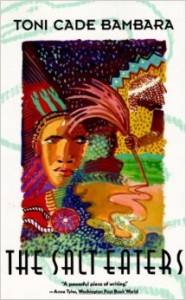 Bambara would, no doubt, concur and would perhaps go further to declare that not only must the literature be explored in the context of an Africentric spiritual history, but to be courageously important; to unleash the “black spirit,” the literature will also be written within this context. That is to say that, for Bambara, the process/product must also emerge from an Africentric spiritual history. This paper will, thus, attempt to examine the causations and motivations of the author of The Salt Eaters, as well as those of the text using Dr. Bolling’s Africentric approach to psycho-spiritual wholeness.
Bambara would, no doubt, concur and would perhaps go further to declare that not only must the literature be explored in the context of an Africentric spiritual history, but to be courageously important; to unleash the “black spirit,” the literature will also be written within this context. That is to say that, for Bambara, the process/product must also emerge from an Africentric spiritual history. This paper will, thus, attempt to examine the causations and motivations of the author of The Salt Eaters, as well as those of the text using Dr. Bolling’s Africentric approach to psycho-spiritual wholeness.
Bolling discusses the psycho-spiritual phenomenon of “finding the soul,” and we discern that this journey directly correlates with Bambara’s shamanic journey that culminated in S.E. He says that when individuals/communities acknowledge and claim their own historical/ancient traditions, behaviors, ideas, beliefs, and practices, or “representational systems,” they are then able to connect to a greater cosmic community capable of channeling directives that the material, logical realm cannot recognize. He further explains that:
The communications from the inner world come as the ‘Voice of the Symbol.’ These communicative voices and messages of the symbols usually appear suddenly from the inner depth of the Soul. They appear as inner guidance through intuitions, insights, dreams, revelations, pre cognition and other phenomena…These inner communications are transmitted through a variety of mediums such as Orisha—archetypal-ancestral spirit forms which are triggered by and enhanced by certain ritual practices and widely held beliefs in Black and other non-mainstream cultural groups. (79)
As a product of Western socialization herself, Bambara glaringly recognizes that these sources cannot always be summoned at will. The dichotomous logical/spiritual conflict is too much in our midst. She says that the forces and sources generally emerge when we are in an altered state:
In church, or fasting or in some other kind of state, times when we are available to intelligences that we are not particularly prone to acknowledge, given our Western Scientific training which have filled us with so much fear that we cannot make ourselves available to other channels of information. (243)
Bambara declares that she is a channeler and further pronounces that she has been “groomed” all her life for this important work. She tells us:
Of all the mothers in the world I might have been born to, I was born at a particular moment to mine and to no other. As a kid with an enormous appetite for knowledge and a gift or imagining myself anywhere in the universe I always seemed be drawn to the library or to some music spot…And when I recall the host of teachers who have crossed my path and always right on time, so unfull of shit…and not only that, but having managed to survive Mather Academy boarding school’s diet to come of age in the sixties—and all the while having some swamphag all up in my face asking me about my dreams (have I had a vision yet, have the voices given me instructions yet)—certainly it all means something…I understand that I am being groomed to perform particular work in this world. (Sternburg 155)
We, of course, must credit Bambara’s extraordinary artistic talents and the masterful craftsmanship she labored to achieve in writing the novel, but more importantly we have to recognize how she consciously separates herself from the ego-centered creative inventiveness that tends to be the expressed causation of so many celebrated writers. Take for instance the great (Euro) American masculinist Ernest Hemingway, who describes his impetus thusly,
From things that had happened and from things as they exist and from things that you know and cannot know, you make something through your invention that is not a representation but a whole new thing truer than anything true and alive, and if you make it well enough, you give it immortality. That is why you write and for no other reason that you know of. (Dick 106—emphasis mine)
I trust this author knows from where his own sources and forces emerge, thus I cannot negate his self-stated motivations for writing (even with his second person references). However, I can surmise a relationship between Hemingway’s articulated motivations and the celebrated Western masculinist psychiatrist, Sigmund Freud’s belief that “Art hallucinates Ego mastery.” Joyce Carol Oates’ own statement of motivation seems also to offer an exegesis of Freud’s theory. She says
Our Egos desire control; we desire master. Reality always eludes us because, like ourselves, it is fluid and mysterious and vaguely terrifying…it is always beyond our grasp, even those we love and who love us and whom we imagine we control, a little, are ultimately beyond our grasp, very noble in their independence, doomed to private lives and deaths. But we want, we want desperately this mastery. And, wanting it, we must therefore create it; we dream; we create a world (let us say a short story [or novel]) which is populated by people we have made, whose thoughts we direct, and whose fates we make sure add up to some sense. (Dickson xv)
 This ego-centered causation is directly oppositional to Bambara’s spirit-centered one, where Dr. Bolling would say that the Soul is the primary organizing principle. But even when the spirit of one’s traditions is given credit for this causation, not always is this credit given with a complete understanding of the Soul-source. For example, Marjorie Pryse, writing about Alice Walker’s The Color Purple, reflects on Walker’s acknowledgement in the book which says, “I thank everybody in this book for coming.” Walker signs the acknowledgement “A.W., author, medium.”
This ego-centered causation is directly oppositional to Bambara’s spirit-centered one, where Dr. Bolling would say that the Soul is the primary organizing principle. But even when the spirit of one’s traditions is given credit for this causation, not always is this credit given with a complete understanding of the Soul-source. For example, Marjorie Pryse, writing about Alice Walker’s The Color Purple, reflects on Walker’s acknowledgement in the book which says, “I thank everybody in this book for coming.” Walker signs the acknowledgement “A.W., author, medium.”
Pryse, however, finds this acknowledgement problematic and says that in it, “Walker suggests that the back woman novelist cannot view herself as extraordinary, a fluke of twentieth-century American culture.” She contends that “women’s magic,” or, as she describes it,“ all the creative force of [her] black and female forerunners,”stands at the source of the writer’s creativity. Neither Walker nor Bambara would dispute this assertion. However, they both seem to recognize that beyond this creative “women’s magic,” beyond the powers that have evolved through the physical history of our foremothers are other forces at work—those of a spirit world.
1 Dr. Bolling’s work in major psychiatric clinics and community centers in the U.S. “led him to conclude that theoretical constructs developed to analyze behaviors and treat behavioral disturbances in mainstream Western culture inadequate when applied to non-mainstream cultural groups.” He contends that the inadequacy of these theoretical constructs stems from the absence of “the important ethnic and cultural factor of Soul.” This “Soul”-based theoretical framework is, thus, central to his clinical approach. See page 21 of his book for a more detailed account.
(to be continued… stay tuned for part two of this two part essay on Sunday, November 23, 2014)
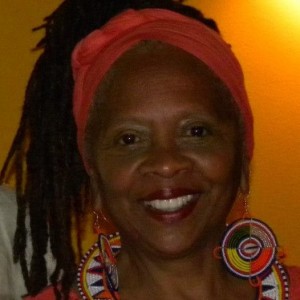 Dr. Janice Liddell recently retired as Assistant Vice President for Academic Affairs and Coordinator of Faculty Development at Atlanta Metropolitan State College. She also served in several capacities at Clark Atlanta University for over thirty years, including professor, department of English chairperson and director of faculty development. She is the author of a children’s book and coeditor of a collection of literary criticism; as well, she is author of several published articles, poems and has had several plays produced nationally and internationally.
Dr. Janice Liddell recently retired as Assistant Vice President for Academic Affairs and Coordinator of Faculty Development at Atlanta Metropolitan State College. She also served in several capacities at Clark Atlanta University for over thirty years, including professor, department of English chairperson and director of faculty development. She is the author of a children’s book and coeditor of a collection of literary criticism; as well, she is author of several published articles, poems and has had several plays produced nationally and internationally.
You may also like...
3 Comments
All Content ©2016 The Feminist Wire All Rights Reserved

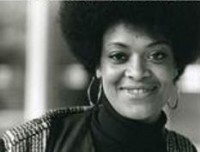
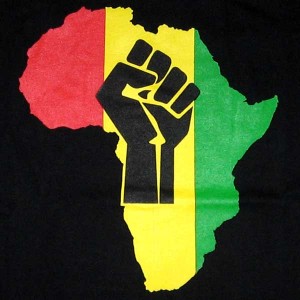

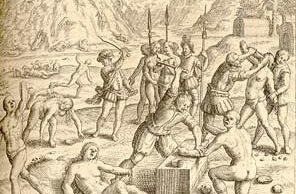

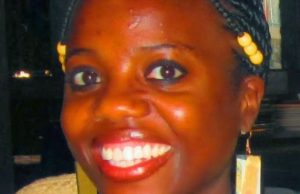
Pingback: Unleashing the Power of the Soul: Spirit and Spirituality through Toni Cade Bambara’s The Salt Eaters and John Bolling’s The Spirit of the Soul (Part II) - The Feminist Wire | The Feminist Wire
Pingback: Feminists We Love: Linda Janet Holmes [VIDEO] - The Feminist Wire | The Feminist Wire
Pingback: Afterword: Toni Cade Bambara's Living Legacy - The Feminist Wire | The Feminist Wire